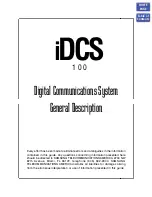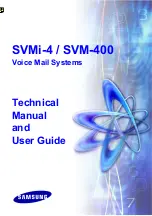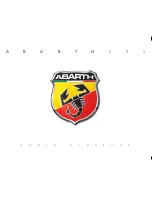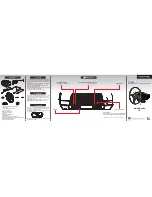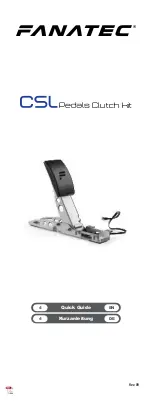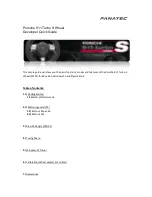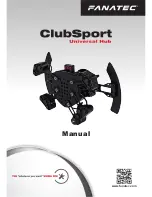
66
6.
Verify all fuel line connections are tight and leak-free – including connections in the tank.
7.
Verify that there is plenty of fuel in the tank.
8.
Verify that the fuel filters (including the sock-type filter in the tank) are not clogged.
9.
Verify that the fuel tank is vented.
10.
Verify that the vehicle is plumbed for a returnless-style fuel system – no mechanical fuel
pressure regulator and return line installed. If those are installed, change the Fuel Delivery
type to “Return” on the Fuel System Screen. The Fuel System screen can be accessed within
the Setup Wizard or from the Advanced menu.
Troubleshooting Inj DC Limit Fault
1.
Verify that the fuel system and fuel injectors are rated to support the engine’s power level.
2.
Verify there is plenty of fuel in the tank.
3.
Verify fuel pressure during a wide open throttle run. Have an assistant monitor fuel pressure
while you drive. Fuel pressure at wide open throttle should equal, or very nearly equal, the
static pressure. For a return style fuel system, that is the pressure the mechanical fuel
pressure regulator was set to with pump on and engine off. Or it is the target fuel pressure
selected for a returnless fuel system. If it is significantly lower, the fuel system is not keeping
up with the engine’s fuel demand.
4.
Check for any debris in the fuel pump/fuel filters.
5.
Verify that the fuel tank is vented.
NOTE:
If the fuel system or injectors are not supplying enough fuel for the engine, it is most
likely to only be a problem at high RPM and high load. Unless there is a major, fundamental
failure in the fuel system, an Inj DC Limit fault should not mean it is unsafe to run the engine.
Just be careful to avoid high RPM/high load until the issue has been resolved.
When an error code is set, learning will be disabled until it is cleared. The two exceptions to this are
the IAC and Inj DC Limit faults. An IAC fault does not disable learning because a failed IAC does not
affect the fueling calculations. An Inj DC Limit fault does not permanently disable learning. Instead it
only temporarily disables learning while injector duty cycle is above 100%. Once injector duty cycle
drops back below 100%, learning can resume.
Engine Protection/Limp Mode
Besides being a powerful troubleshooting tool, the on-board diagnostics also protect the engine.
Contingency plans are built into the ECU so that if a sensor fails, protective action can be taken. If, for
example, there is a problem with the coolant temperature sensor, the ECU’s electric fan control outputs
will be switched on to guard against over heating.
If the ECU detects a problem with a sensor, it will switch to using pre-programmed default values in
the affected part of the fueling calculations. This puts the ECU into “limp” mode. If there is a problem
with any of the sensors, the engine will still have a chance to run so the vehicle will not be stranded.
(The exception is the RPM signal. Without an engine speed input, the engine will not run.) Depending
Содержание 30400-KIT-EZ-EF
Страница 11: ...11 In Tank Fuel Pump System Layout...
Страница 17: ...17 In Line Pump Fuel System Layout...
Страница 56: ...56 Dash 1 Dash 2 Dash 3...
Страница 69: ......
Страница 70: ......




















